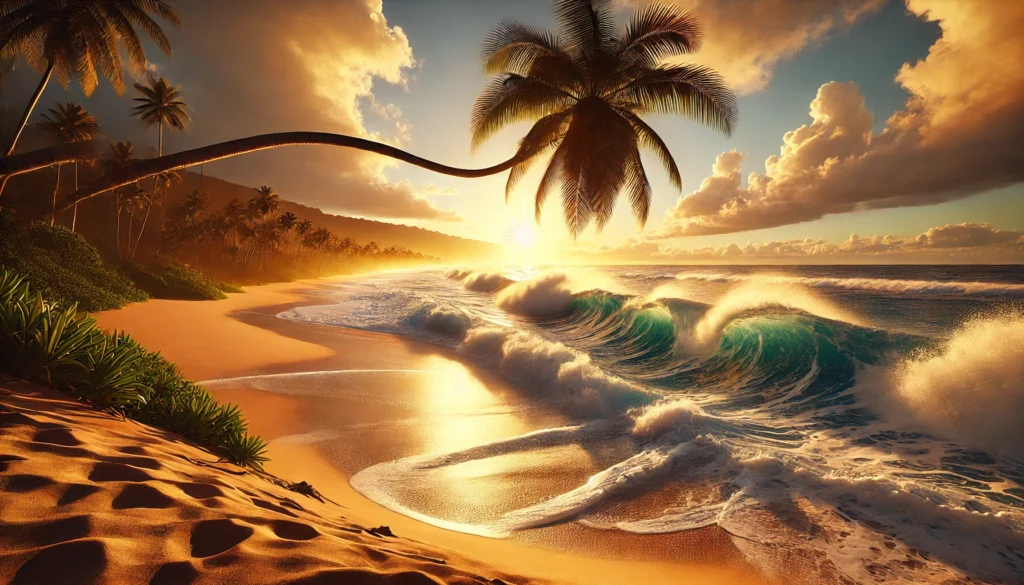After touching down in Honolulu, we made our way to a hotel just off Waikīkī Beach—a location that balanced city energy with ocean serenity. Mornings began with the gentle sounds of waves and the soft glow of the sun warming up the island skyline. Even though we weren’t beachfront, we were only a short walk away from toes-in-the-sand bliss.
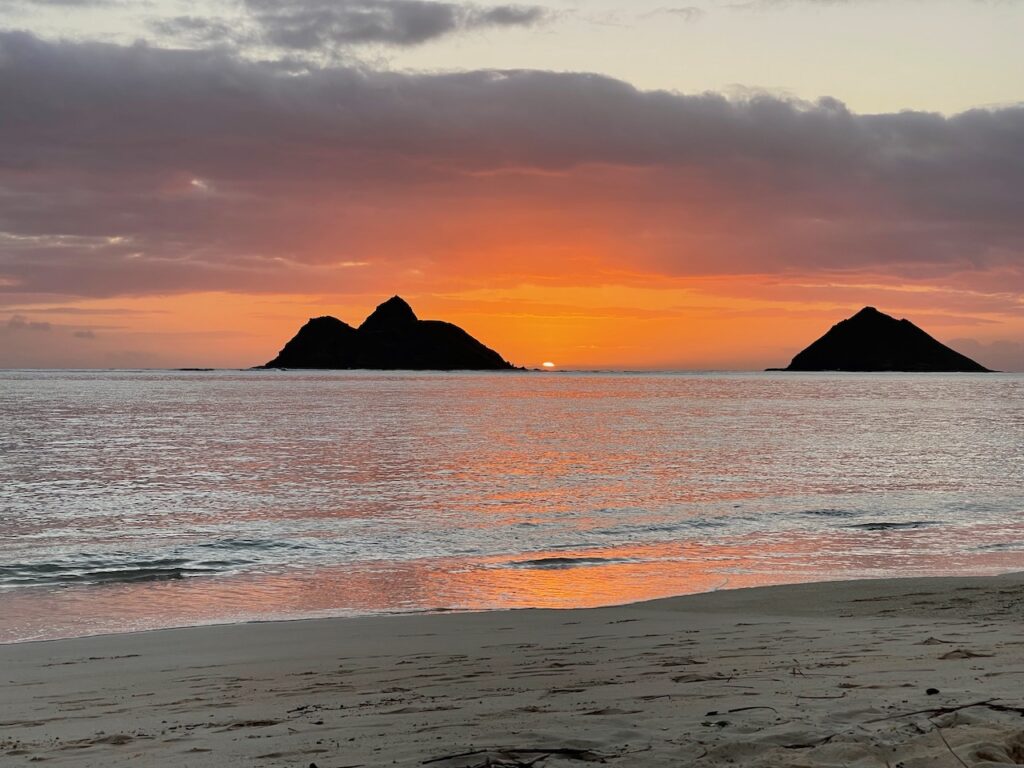
Honolulu surprised me. I expected a touristy gateway to the rest of the island, but instead found a vibrant city that pulses with culture, history, and incredibly good food. It’s the kind of place where you can pick up a musubi at a gas station and it still tastes better than most snacks back home.
We woke early the first day—and by early, I mean we took full advantage of the five-hour time difference and the jet lag from the day before. We are not morning people. The idea of catching a sunrise is usually filed under “aspirational but unlikely.” But somehow, we rallied. And even then, we were running late and maybe drove a little faster than we should have.
Still, we made it to Lanikai Beach just in time to see the sky burst into shades of pink and orange behind the Mokulua Islands. It was quiet, serene, and totally worth the hustle. Rarely do our mornings start with such beauty—or with that much adrenaline.
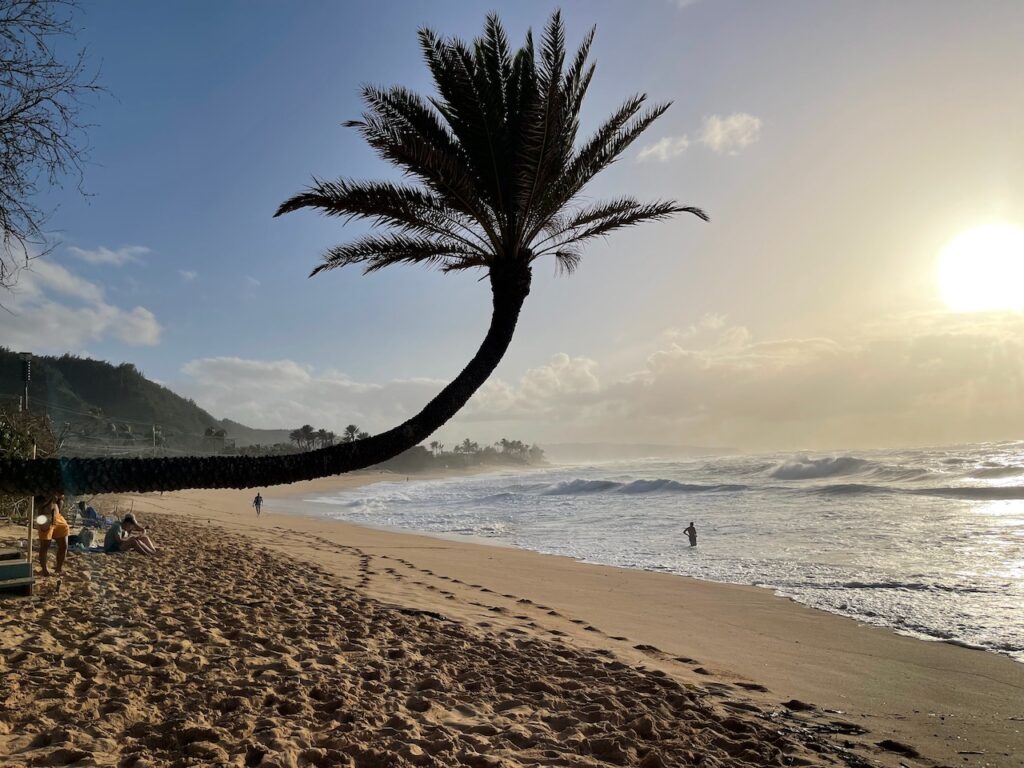
On the flip side, we chased the sunset at Sunset Beach Park, where massive waves crashed against the shore like thunder. The red flag warnings were no joke. You could feel the sheer force of nature there, humbling and hypnotic all at once. We didn’t swim—nobody with sense was—and not even the surfers dared to flirt with physics that day.
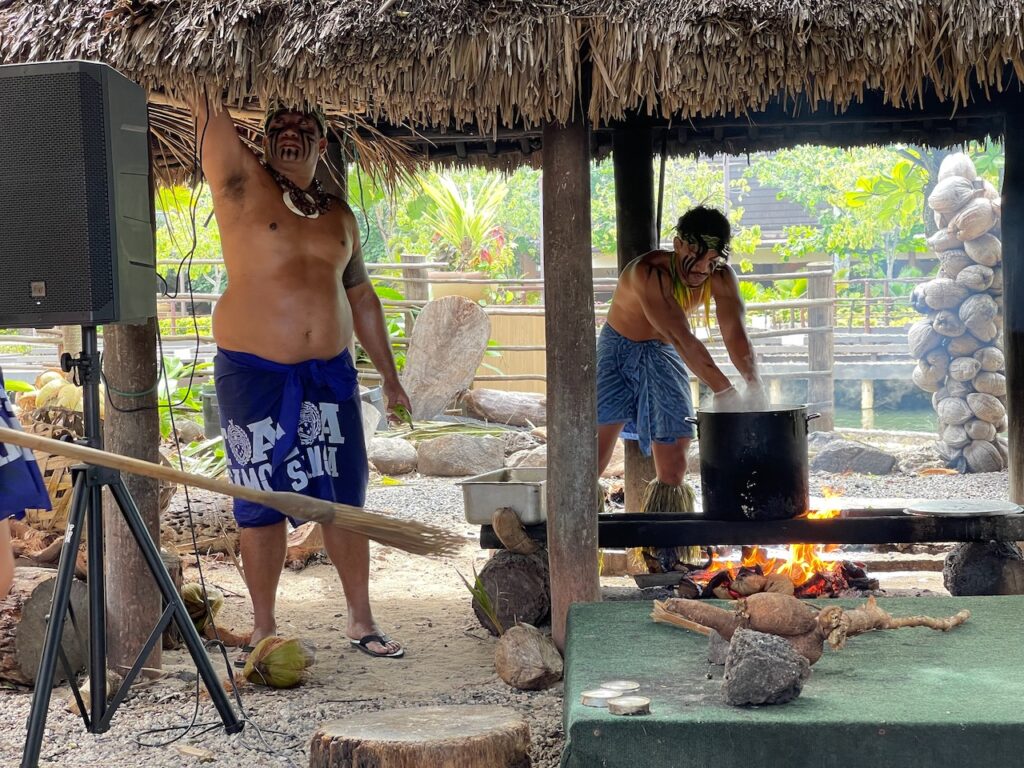
One of our more immersive stops was the Polynesian Cultural Center, a full-day experience that was equal parts museum, performance, and living history. We wandered through meticulously recreated island villages, each one highlighting the distinct traditions, language, and artistry of Polynesian cultures from across the Pacific. From learning how to make coconut milk by hand to watching a fire-knife dance that defied logic and gravity, it was the kind of place that made you forget you were a visitor and feel like a guest.
The luau was a celebration in itself—fresh lei on arrival, kalua pig straight from the imu, and music that lingered in your mind long after the final note. If you plan to go, bring your curiosity and block out your calendar. There’s so much to see and do that anything less than a full day feels like skimming the surface of something truly rich and meaningful.
We had high hopes for a “50 First Dates” moment on the Makapuʻu Point Lighthouse Trail, visions of dreamy cliffside vistas and cinematic romance playing in our heads. Unfortunately, the trail was closed—completely off-limits. Instead of lush coastal views and lighthouse selfies, we got a locked gate and a good laugh. For a second, we considered scaling a fence like rebellious teenagers chasing Adam Sandler-level nostalgia, but decided against adding “arrested for trespassing” to the travel log.
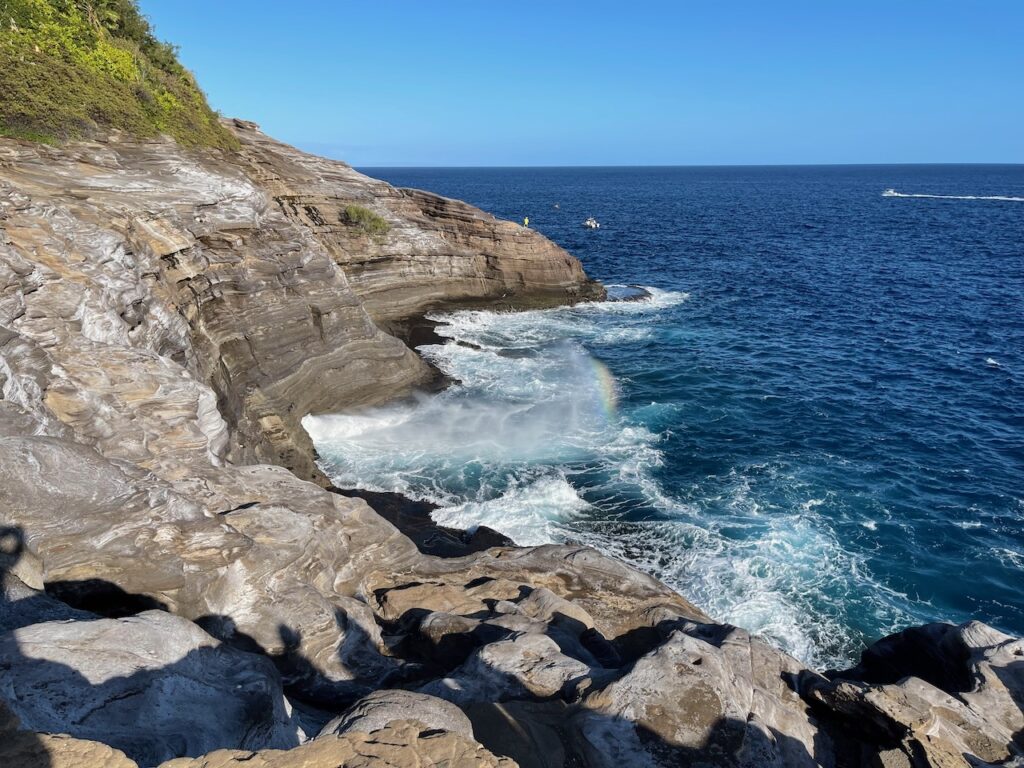
Still, we made the best of it. From the accessible viewpoint nearby, we took in the expansive coastline—and casually spotted our first whales of the trip. A few spouts here and there in the distance, and just enough of a glimpse to feel like nature was cutting us a break. Not the lighthouse moment we’d hoped for, but a pretty solid consolation prize.
Hiking the Spitting Cave trail offered both adventure and reward. Tucked into a residential neighborhood, it’s an unmarked path that leads to one of the most visually dramatic coastal views on the island. Waves funnel into the lava rock formations and blast out like geysers. Nature’s special effects department.
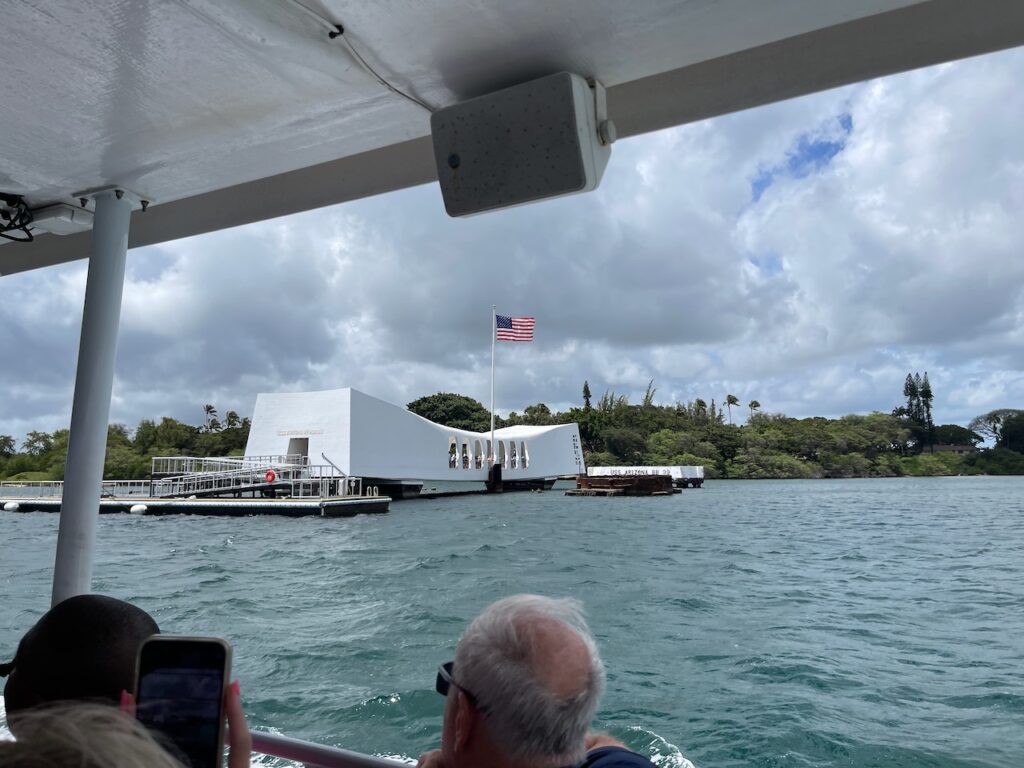
We closed out our time on O‘ahu with a visit to the Pearl Harbor National Memorial, one of the most solemn and humbling parts of the trip. Standing above the sunken USS Arizona, you can feel the weight of December 7th, 1941—the lives lost, the devastation, and the beginning of America’s entry into World War II. It’s quiet there, with an almost sacred stillness that settles over you. The memorial doesn’t ask for attention; it commands it. Reading the names, seeing the oil still rising from the wreckage after all these years—it’s impossible not to feel a deep respect for the service members who gave their lives and for the impact this attack had on the world. It’s a place that stays with you long after you leave.
Every moment on O‘ahu gave us something different: joy, wonder, reflection. The island is much more than just a stopover—it’s a destination in its own right, and we left with full hearts, sandy shoes, and just a few more malasadas.

